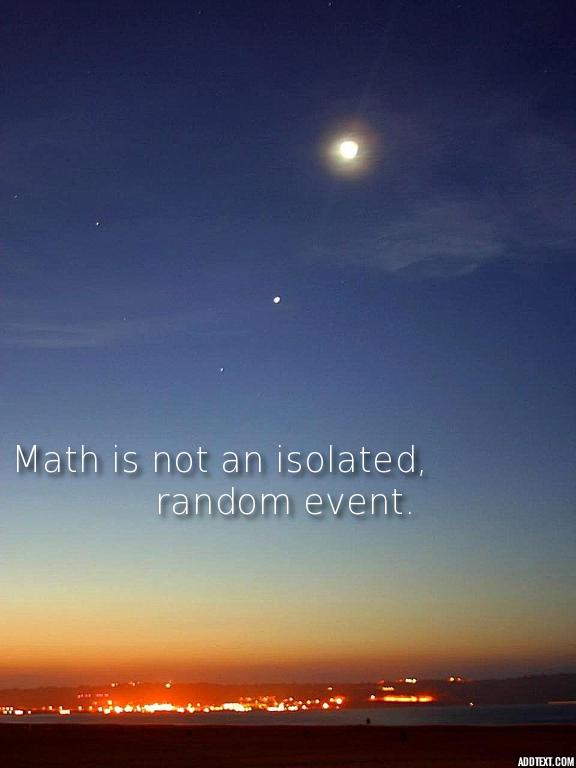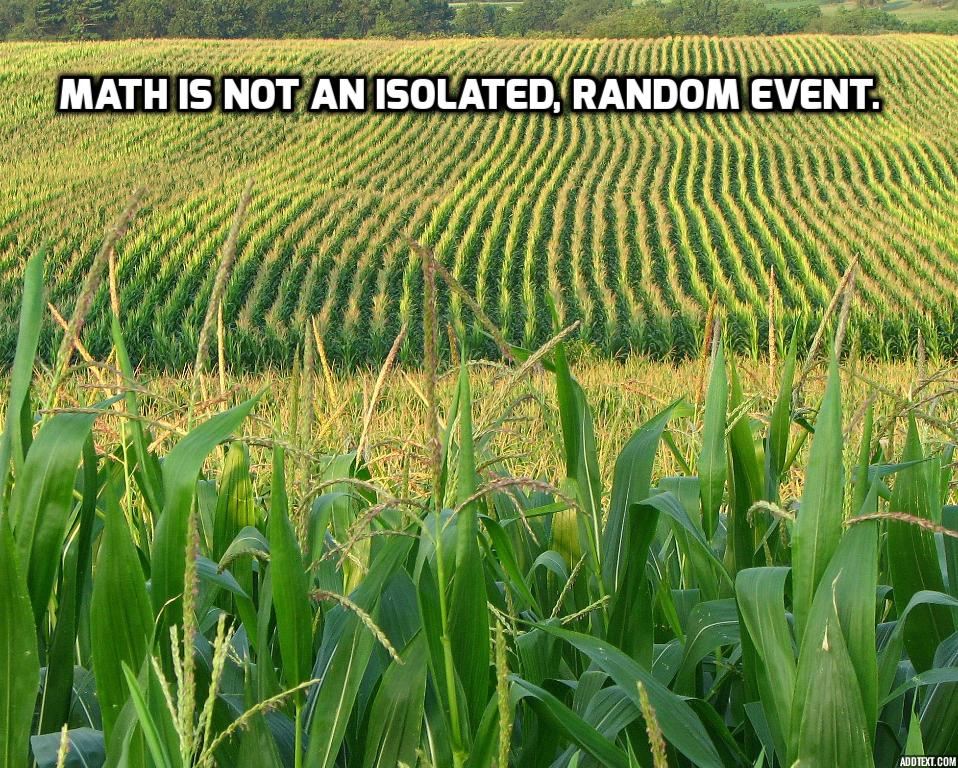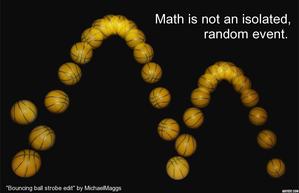ImagineIT - Phase 1
i-Images
ImagineIT
With the idea of answering the question, "Where does Math come from?" I chose the images and text above to illustrate that Math is the result of human observations (and a lot of hard work) that has been developed over the centuries. The first image makes me wonder how the first people might have looked at the sky and pondered their existence or saw patterns in the movement of celestial objects. I was drawn to the second image because I imagined that as mathematical ideas became more sophisticated, people started putting these ideas to use, for example, in agriculture. Finally, the third image illustrates how with modern technology, we have a multitude of tools that we can use to display or quantify mathematical ideas.
The images were selected from creative commons search results and the captions were simply added through the website www.addtext.com.
The images were selected from creative commons search results and the captions were simply added through the website www.addtext.com.
ImagineIT: The idea behind my project is for students to become mathematical observers of the world around them. In other words, how can you put what you see into mathematical terms? Are there inherent relationships between the objects in a photo, or the movement of the images from which you can create a mathematical expression or equation? For example, if you see a particular ball bounce once, twice, and a third time; can you predict the subsequent bounces? Can you formulate an equation for that particular ball bounce? The target participants are 8th grade students in my Algebra class.



